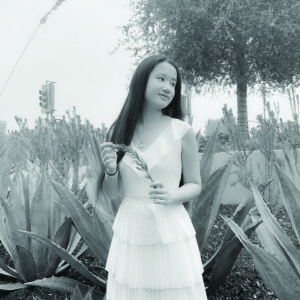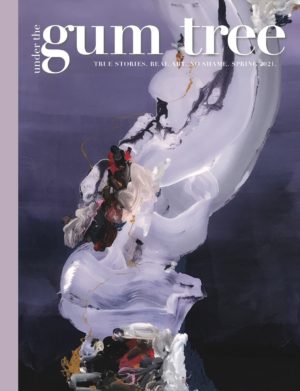Serrina Zou

Serrina Zou is a Chinese-American writer from San Jose, California. She has been recognized by the National YoungArts Foundation, the Scholastic Art & Writing Awards, the U.S. Presidential Scholars Program, the Poetry Society of the UK, and Frontier Poetry, among others. Her work appears or is forthcoming in Cosmonauts Avenue, AAWW: The Margins, COUNTERCLOCK Journal, Tinderbox Poetry Journal, and elsewhere. When she is not writing, Serrina can be found feeding her Philz Coffee addiction or devouring a tower of novels. She will attend Columbia University in the fall of 2021.
Speak to your process of picking descriptors. How do you prompt yourself to think? Do you rely more on imagination or memory?
Since “Li(f)e” is one of the first creative nonfiction narratives I experimented with, I went with the classic mantra “write what you know.” The initial draft was actually produced in response to the final assignment in my AP US History class last spring, in which my teacher challenged all the eleventh graders enrolled in the course to write a primary source about our daily lives during the COVID-19 pandemic. But to spice up the assignment, he instructed us to imagine what would happen if a historian were to dig up these accounts a hundred years into the future. At the time, I was seventeen and terrified; naturally, this distorted my memory of the events early on during the pandemic. To that end, wherever my memory failed, I employed imagination by way of sensory metaphors to seal the gaps.
How was this story affected by the pandemic, whether in content, writing process, or any other way? What did you take away from the pandemic, and how does that interact with or reclaim what the pandemic took away from you?
As a first-person documentation of life during COVID-19, “Li(f)e” is very much a story born from the burning fear that accompanies the pandemic. This past year under lockdown has given me both the gift and burden of solitude. Gift, because solitude has allowed me to reflect and write in a way I never could have in my pre-pandemic life. Burden, because solitude has also limited my interactions with loved ones and isolated me from them. Through “Li(f)e,” I hoped to transform that solitude into a story that forges solidarity with others.
The story centers around a particular scene wherein the characters experience a moment of self-growth and recognition. How do you feel the two versions of self interacting with each other before, during, and after the piece?
Interestingly enough, this question brought to mind the seven key characteristics of life I was taught to memorize in biology: growth and change. As a sentient human being breathing into a writer’s body, I am constantly growing, whether that be physically, emotionally, or spiritually; having toyed with nonfiction for the first time in this piece, I wanted to mimic this growth. Writing has always served as a process of delving into the rich, imaginative life; so it made sense that though there can only exist one of me in my current reality, in my stories, I can inhabit many selves and those selves can consolidate into the extraordinary complexity that is human life. In my piece, I wanted to create a dialogue among my multiple selves: the self mourning the pandemic’s treacherous past, the self peeling raw in the present, and the self mapping an uncertain future. The moment of self-growth and recognition mentioned is the focal point at which all three of these selves intersect and bare the truth of their collective struggle to live.
What role has the natural world played in these pieces, either as inspiration, motivation, setting, or process of exploration?
Before the pandemic, my best ideas sprouted while listening to the chatter of strangers at my favorite coffee shop, Philz, or while strolling aimlessly at sunset. After quarantine, the frequency of these coffee shop visits and long walks thinned, and I found myself pulling back the blinds almost every day to peer into the world outside my window. I was told once that writers, or any artists for that matter, are given two—maybe three—obsessions in their lifetime; the sky is one of mine. Throughout “Li(f)e,” I stretched the sky into a motif for all the unfinished tragedy left behind, but later for the unraveling of hope into the future trailing into the horizon and beyond.
How did you come to your understanding and definition, of the sky, or cielo, as it appears in the piece? How has your knowledge of multiple languages expanded this understanding?
I opened the “Li(f)e” with my unrefined linguistic abilities to establish the balance between the physical, emotional, and spiritual, and later the dichotomy between the personal and lyrical. I wrote “Li(f)e” after I had finished the AP Spanish exam and marveled over how much I toiled with speaking the language but eased into reading and writing in it. Conversely, I grew up speaking Mandarin, but never learned how to read or write it correctly. To explore my already integrated obsession with the sky, it seemed only natural to approach it from a linguistic perspective. Later, in revisiting the dichotomy between the unrelenting personal and the distant lyrical, the linguistic melding between Mandarin, English, and Spanish with the sky as an overarching canopy came to represent how our innate cultural backgrounds trigger different responses to the same fear, even when divided along sociopolitical lines.




